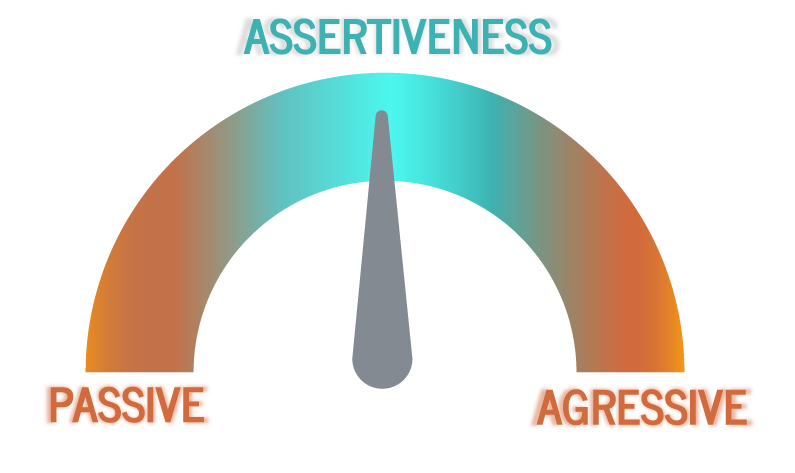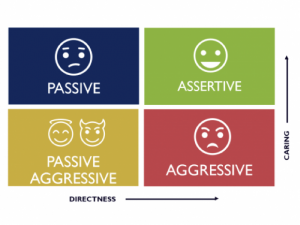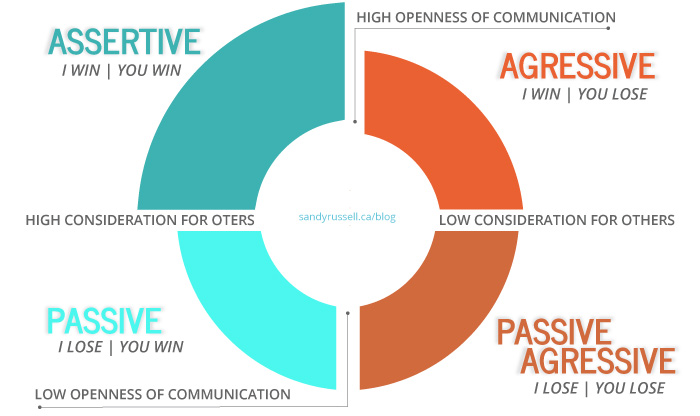Photo by @rf._.studio from Pexels
Stop Avoiding Conflict: 9 Transformative Strategies To Help You Thrive!
Over the last 20 years working with employees at all levels, I have witnessed a communication pandemic taking place in Canadian organizations. The virus is called Conflict Avoidance.
As a nation, we are considered ‘nice’. We tend to shy away from arguments. We prefer it when everyone gets along.

Photo source: overland.org
Clients tell me they don’t like conflict. They don’t want to engage in difficult conversations. They hesitate to disagree for fear of ‘rocking the boat’ or appearing ‘difficult’. They don’t speak up, even when they have something important to say, and especially if they think what they have to say will be unpopular. In fact, one of the most common ways I see this virus play out for leaders is the avoidance of performance feedback conversations. They try to put them off indefinitely and often tip toe around their messaging.
Conflict avoidance can feel good in the short term but ultimately, we pay the price. We get overlooked for promotions, lose trust and respect in our relationships and our confidence suffers. Physically, it leads to toxicity in our body, draining our energy and spirit.
In addition, the costs to a team’s morale, productivity and psychological safety are enormous. In fact, this Canadian peaceableness often gets in the way of the healthy disagreement and friction needed for the kind of rigorous collaboration required to drive innovation and profits.
In my view, not having the skills to evolve beyond this virus of conflict avoidance is the biggest (and most toxic) block to individual, team and organizational effectiveness that exists.
So, what is the solution? A vaccine called Healthy Assertive Communication and here are 8 ways to begin cultivating this within!
1) Understand What Assertiveness Is and Is not.
When delivering assertiveness training in organizations, it always astounds me how people are initially hesitant to learn this skill. In any given workshop, typically 80% of participants want to be less passive. However, they are initially worried that assertiveness will mean they need to start bossing people around and that others will start to see them as pushy, aggressive, or bitchy. The other 20% of participants want to tone down their aggressiveness. Initially they are worried this change will dial down their power and influence.
Knowing people come in with these concerns, I always begin by asking the group, “What qualities do you value in communication with others?” They always say things like:
- Good listening
- A 2-way interaction
- Curiosity
- Clarity
- Empathy
- Calmness
- Patience
- Objectivity
- Honesty
- A positive attitude
- A win-win approach
- A focus on moving things forward
- Respectful dialogue
- Succinctness
- Candour
When I look at their list and say, “Those are the qualities of assertive communicators!”, they are surprised, relieved, and eager to learn more!
“Assertiveness is the ability to express yourself openly and honestly without denying the rights of others.”
– OURBizzness Productions
Assertiveness exists in the healthy range of the communication continuum. It requires using situationally appropriate levels of backbone and heart to build relationships while moving the conversation forward using a win-win approach.

Too much backbone without enough heart becomes aggressiveness! Too much heart without enough backbone makes you a passive doormat! And passive-aggressiveness is covert aggression. It can be extremely subtle and includes manipulative behaviours such as lies, sarcasm, gossip, and stonewalling. A definite toxin!
2) Step Out from The Shadows of Passivity and Passive-Aggressiveness.

Photo source: University of New Hampshire
When you want to speak up, but you do not, you feel disempowered. This leads to inner frustrations and lowers self-esteem. Others might feel sorry for you, try to protect you, or assume you have nothing to say. If this leads you to passive-aggressiveness you lose respect and trust from others as they become confused by your mixed messages.
The better option when you want to speak up is to take a deep breath and even if your heart is pounding or your palms are sweating or your voice is shaking, step into your voice. You owe it to yourself and others!
“We’ve learned that quiet isn’t always peace.”
– Amanda Gorman
3) Choose Courage and Aliveness Over Comfort.
Avoiding conflict is the path of least resistance. It’s comfortable. Instead of remaining stuck in fears and frustrations, embrace discomfort. Raise your tolerance for it. See it as a normal part of the growth process. Be your own cheerleader. Remind yourself that breakthroughs occur when you go beyond your usual patterns. Courageously stepping into your assertiveness is a way to achieve that. You will open up your potential and your life in ways that might currently be unimaginable.
“Life shrinks or expands in proportion to one’s courage.”
– Anais Nin
4) Know That ‘No’ is Not Negative!
Clients often tell me they feel guilty saying no to a request. They are concerned about appearing selfish or inflexible. In reality, however, it would be impossible to say yes to every request that comes your way. When would you sleep?
The key is to say yes when you mean yes, and no when you mean no. If you’re not clear which it is, give yourself the permission to reflect or ask questions about the request before responding. You might decide you can say yes to part of the request. Regardless, saying no does not have to be negative. There are many ways to say it gracefully. Your goal should be to ensure you are setting healthy boundaries for yourself. That is self-care, not self-ish. It also prevents resentment from creeping into your relationships!
“A high quality ‘no’ leaves more room for love.” – Anonymous
5) Stop Being Nice. Stop Being A People Pleaser. Start Being Real.

Being nice is fine if it is authentic but if we say or do what we think will please another just to keep the peace or be liked, that is deception in the form of emotional dishonesty. True authenticity means being able to express your thoughts and feelings despite fear and concern. By doing it assertively, with high openness and high consideration for the other person you maintain the relationship and may even strengthen it!

6) Stop Complaining and Start Making Requests.
Our lives begin to end the day we become silent about things that matter.”
– Martin Luther King Jr.
As leaders, when we allow our frustrations to fester without speaking up, our needs and wants cannot possibly be met. This often leads to resentment and further frustration. A better, more assertive choice is to stop complaining and start making requests!
7) Do the Work to Overcome Your Emotional Triggers.
“If you really want to do something, you’ll find a way. If you don’t, you’ll find an excuse.”
-Jim Rohn
It is easy to blame others when their behaviour triggers you. However, unless you do the personal work of evolving beyond your triggers, they will continue to thwart your best intentions at being assertive. So, make it a priority to do this inner work. It is one of the most self-compassionate, life-enhancing actions you can take. Not only will it support your assertiveness efforts, but it will also bring more inner peace to your leadership, career, and life.
As one senior executive said to me recently, “I was in a meeting the other day and was so triggered I just went silent. I was unable to be assertive and participate in a healthy conversation because I was so frustrated by the group. This will be a huge liability for me going forward…I need help in being more assertive.”
8) Choose the Light of Higher Consciousness Communication
Choosing an assertive way of life is not always easy, but it’s more than worth it. It is about choosing to rise up in our personal consciousness. It is about honouring our deepest values so we can live in right relationship with ourselves. As neuroscience tells us, it is our doorway to a higher energy field and the higher we go, the happier, healthier, and more effective we will be.
“When day comes we step out of the shade
Aflame and unafraid
The new dawn blooms as we free it
For there is always light
If only we’re brave enough to see it
If only we’re brave enough to be it.”
– Amanda Gorman
Inaugural poet, Author, “The Hill We Climb”
9) Practice, Practice, Practice to Build Your Personal Assertiveness Vaccine!
No vaccine worth using is created overnight. Nurturing your assertiveness skills and attitudes takes time. Get help if you need it. Take baby steps. Learn through trial and error. Be self-compassionate. Enjoy the journey. In time, your efforts will become ripples of positive experiences that will build on each other. Your habit of conflict avoidance will be extinguished and assertiveness will have become a way of life. Magically, the conflicts that used to show up in your life will either no longer phase you, no longer exist in you, or disappear altogether.
Be the vaccine, not the virus. You are ready for breakthroughs. Best of luck on your journey!
 Sandy Russell, CPHR, CPCC, PCC, CNTC, is a Workshop Leader, award winning Certified Coach and Chartered Professional in HR. Since 1995 she’s been empowering individuals, leaders and teams to leverage their potential and help create cultures where people are evolved, empowered, effective and engaged. Specialties include: people management, leadership effectiveness & consciousness, neuroscience, communication skills, career fulfillment/transition, personal leadership and team cohesion & development. To join Sandy’s mailing list or learn how you can work with her, please visit www.sandyrussell.ca. or reach out directly at 604-739-4780 or sandyrussell@telus.net.
Sandy Russell, CPHR, CPCC, PCC, CNTC, is a Workshop Leader, award winning Certified Coach and Chartered Professional in HR. Since 1995 she’s been empowering individuals, leaders and teams to leverage their potential and help create cultures where people are evolved, empowered, effective and engaged. Specialties include: people management, leadership effectiveness & consciousness, neuroscience, communication skills, career fulfillment/transition, personal leadership and team cohesion & development. To join Sandy’s mailing list or learn how you can work with her, please visit www.sandyrussell.ca. or reach out directly at 604-739-4780 or sandyrussell@telus.net.
Other Publications
Stay In Touch!
please reach out. Thanks!




